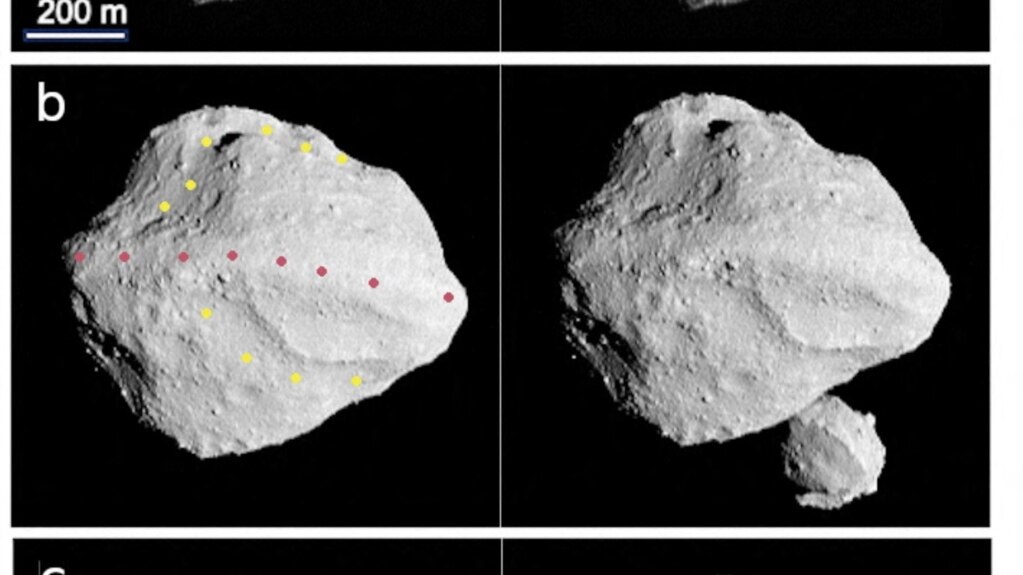NASA's Lucy spacecraft visited a little asteroid called Dinkinesh last November. The visit, scientists say, unlocks a surprisingly interesting history of the asteroid along with its companion, Selam.
Asteroids are ancient objects from the beginning of the solar system. They offer clues about how Earth and other planets formed about 4.5 billion years ago.
The U.S. space agency launched Lucy in 2021 on a 12-year mission to study asteroids. The mission is especially interested in Jupiter's Trojan asteroids, two groups of space rocks that lead and follow the giant planet as it orbits the sun.
On the way, Lucy flew past Dinkinesh and Selam in the inner edge of the main asteroid belt. The spacecraft observed ridges, trough structures and other features on Dinkinesh.
Dinkinesh has a diameter of nearly 720 meters. Selam is made up of two similarly sized lobes, one about 230 meters wide and the other about 210 meters. Selam orbits Dinkinesh once about every 53 hours at a distance of about 3.1 kilometers.
It appears, the researchers said, that a big piece of rock broke free sometime in the past from Dinkinesh. The rock was about a quarter its total size, creating a trough on its surface and sending debris into space. Some of this debris, they said, fell back onto Dinkinesh's surface to form a ridge structure.
Other materials came together to form Selam, becoming what is called a contact-binary moonlet.
Katherine Kretke, from the Southwest Research Institute in Colorado, is a co-writer of the study published in Nature. She said that “a contact-binary is when it appears that a single body is composed of two objects that collided gently enough not to become disrupted.”
Kretke said they are common in the solar system, but Selam was “the first time a contact-binary has been observed orbiting another asteroid.”
Simone Marchi is another co-writer of the study. He said, "A planet like Earth formed by the accumulation of countless small bodies. Understanding the properties of small asteroids such as Dinkinesh and Selam helps us to have a better picture of the earliest phases of planet formation.”
NASA's spacecraft was named for the Ethiopian fossil of the extinct human relative Australopithecus called “Lucy.” That fossil has provided information about early human beings, much like asteroids provide knowledge of planetary formation.
Dinkinesh is the Ethiopian name for the Lucy fossil, meaning "you are marvelous" in the Amharic language. Selam, the Ethiopian name for another Australopithecus fossil, means "peace" in Amharic.
Lucy will next visit the asteroid Donaldjohanson in 2025 in the main asteroid belt. The spacecraft is expected to visit 11 asteroids in total.
I’m Dan Novak.

